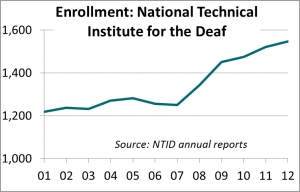 If Great Schools for All had a mantra, it would be WIN-WIN. We don’t have to accept as inevitable huge gaps between winners and losers, where students’ success or failure is pegged to their zip codes and family income.
If Great Schools for All had a mantra, it would be WIN-WIN. We don’t have to accept as inevitable huge gaps between winners and losers, where students’ success or failure is pegged to their zip codes and family income.
In a WIN-WIN environment, our community would rally around educational reforms and systemic changes that would reduce these disparities. That’s what GS4A is all about.
All children are capable of learning and succeeding academically, regardless of where they live, and we’re all aware of examples of bright, motivated kids who have risen up from impoverished backgrounds to succeed, despite the odds. But we also know, from decades of research, that the deck is stacked against students in high-poverty schools. When the poverty population of a school tips past 50 percent, the odds of success are statistically much lower.
And every school in Rochester far exceeds the tipping point, with predictable academic consequences in most. So why is our community willing to accept this situation?
The city has many successful students, and a number of successful, popular schools. But what if we could find ways to strengthen those schools, retaining current students, but expanding the socio-economic diversity in each? What if we could open more slots in these schools and offer them to more affluent students, to create a more diverse student body? Or replicate the most successful schools based on the initial models? We could create a WIN-WIN situation by offering, on a voluntary basis, well-regarded city programs such as School of the Arts, School Without Walls, Montessori, World of Inquiry expeditionary learning, and the International Baccalaureate program at Wilson Magnet School to students who have few or no such options even in well-off suburban districts .
And what if we were to create additional voluntary magnet schools across the county, based on models that have proven successful in other urban communities, offering opportunities that would not be available within most individual school districts, and that would be so exciting and unique that both urban and suburban students would want to attend?
The research makes clear that poor children perform much better in schools that are economically mixed than they do in high-poverty schools. And their success does not come at the expense of the middle class students in those schools. As one example, in Raleigh/Wake County, N.C., where 35 economically-diverse magnet schools have been created, subject to policies capping proportions of low-income students at roughly 45 percent per school, graduation rates for low-income and racial-minority students have steadily increased in recent years to more than 70 percent — some 30 percentage points higher than for comparable students in the more economically segregated Rochester schools. Meanwhile, the more affluent Raleigh suburban student graduation rates have increased slightly during those same years to more than 90 percent—rates comparable to Monroe County suburban rates. Disparities in rates have not been eliminated, but have been significantly reduced in Raleigh.
What is not to like about such a situation, and how would that not represent a WIN-WIN for all in Monroe County if we could move in such a direction?
In addition to enhancing academic performance, creation of more voluntary diverse learning environments would also expand cross-cultural understanding among all groups of students, and better prepare them—urban and suburban, black, Hispanic and white, well-off and poor—for the far more demographically diverse workforce that awaits them in the future. Students would have more academic choices than could now be provided by most individual school districts, and the economic vitality of our community would be enhanced by a larger pool of better-educated workers to populate our future work force.
Under more diverse voluntary-choice school scenarios, there is an immense upside potential for our community, with no obvious losers. Clearly the details of how this happens will be critical, but why would we not embark on this journey to explore a variety of possible solutions to reduce our odds of failure and significantly increase the odds of WIN-WIN outcomes for our community?
All of this is a work in progress. GS4A intends to talk with school district officials and survey parents and community leaders across the county concerning these issues over the coming weeks before any proposals are finalized. Anyone interested in joining the process, please email at contact@gs4a.org.
Previously posted on GS4A

 Newly appointed NYS Education Commissioner MaryEllen Elia will require the wisdom of Solomon, the patience of Job, the confidence of Donald Trump and the guile of Machiavelli to succeed in her new job. The divisions both between and within stakeholder groups have never been deeper.
Newly appointed NYS Education Commissioner MaryEllen Elia will require the wisdom of Solomon, the patience of Job, the confidence of Donald Trump and the guile of Machiavelli to succeed in her new job. The divisions both between and within stakeholder groups have never been deeper. If Great Schools for All had a mantra, it would be WIN-WIN. We don’t have to accept as inevitable huge gaps between winners and losers, where students’ success or failure is pegged to their zip codes and family income.
If Great Schools for All had a mantra, it would be WIN-WIN. We don’t have to accept as inevitable huge gaps between winners and losers, where students’ success or failure is pegged to their zip codes and family income.

 In
In 
